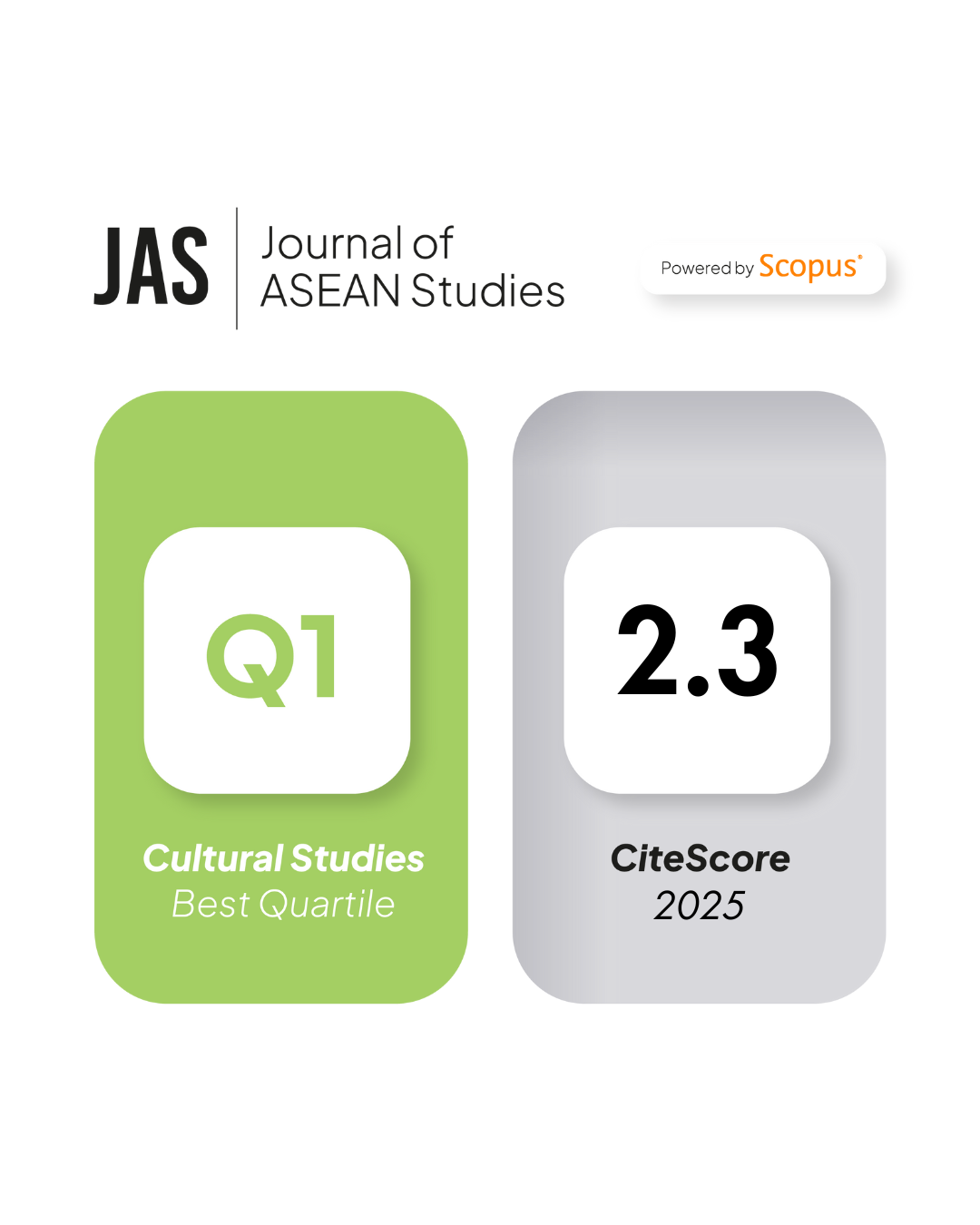The Shift and Continuity of Japanese Defense Policy: Revolutionary Enough?
DOI:
https://doi.org/10.21512/jas.v4i2.1906Abstract
The security environment in East Asia has continuously evolved, particularly, China’s maritime expansion and DPRK’s provocative behavior. Japan, with its military being limited by its Peace Constitution, has been steadily shifting its defense policy to respond to its strategic environment for the past three of its Prime Ministers: Naoto Kan, Yoshihiko Noda, and Shinzo Abe. Historical enmities, military capability, as well as territorial disputes have increased the threats of Japan’s neighbors to Tokyo’s national security. Since 2010, Japan has established a National Defense Program Guideline (NDPG), shifted its defense strategy from the Basic Defence Force (kibanteki boei ryoko) to Dynamic Defense Force (doeki boei ryoko), revised its Three Principles on Arms Exports, created the National Security Council (NSC), the National Security Strategy (NSS), and the Medium Term Defense Program (MDTP), and revised its article 9 of its Peace Constitution. While the NSC, NSS, MDTP, and article 9 are under the Abe administration, the claim that the steps Abe have undertaken to be revolutionary is in fact, a continuity from his predecessors despite coming from opposing political backgrounds. Despite of several significant changes in its defense policy, Japan still abides to its Constitution and its military is still limited.
References
BBC News. (2015, September 19). China warns Japan over expanding military role abroad. Retrieved November 25, 2016, from BBC News: http://www.bbc.com/news/world-asia-34301456
Berkofsky, A. (2012). Japan's Defense and Security Policies: What's Old, What's New, What's Ahead. Konrad Adenauer Stiftung. Berlin: Konrad Adenauer Stiftung.
Dawson, C. (2011, December 28). Japan Lifts Decadeslong Ban on Export of Weapons. Retrieved November 23, 2016, from The Wall Street Journal: http://www.wsj.com/articles/SB10001424052970203479104577123710031180408
Dingli, S., Economy, E., Haass, R., Lurlantzick, J., Smith, S. A., & Tay, S. (2016). China's Maritime Disputes. Council on Foreign Relations. CFR.
Fackler, M., & Sanger, D. E. (2014, July 1). Japan Announces a Military Shift to Thwart China. Retrieved November 22, 2016, from The New York Times: http://www.nytimes.com/2014/07/02/world/asia/japan-moves-to-permit-greater-use-of-its-military.html?_r=0
Fitzpatrick, M. (2013, August 5). Inside Japan's invisible army. Retrieved November 23, 2016, from Fortune: http://fortune.com/2013/08/05/inside-japans-invisible-army/
Fouse, D. (2011). Japan's 2010 National Defense Program Guidelines: Coping with the 'Grey Zones'. Honolulu: Asia-Pacific Center for Security Studies.
Gady, F.-S. (2015, October 15). Toothless tiger: Japan Self-Defence Forces. Retrieved November 23, 2016, from BBC News: http://www.bbc.com/news/world-asia-34485966
Hagström, L., & Gustafsson, K. (2015). Japan and identity change: why it matters in International Relations. The Pacific Review , 1-22.
Harlan, C. (2011, December 27). Japan relaxes weapons export ban. Retrieved November 23, 2016, from The Washington Post: https://www.washingtonpost.com/world/japan-relaxes-weapons-export-ban/2011/12/27/gIQA6KEFKP_story.html
Liff, A. P. (2015). Japan's Defense Policy: Abe the Evolutionary. The Washington Quarterly , 79-99.
Matsuda, Y. (2014, 12 10). How to Understand China's Assertiveness since 2009: Hypotheses and Policy Implications. (M. J. Green, & Z. Cooper, Eds.) Strategic Japan: New Approaches to Foreign Policy and the U.S.-Japan Alliance , 7-34.
Ministry of Defense, Japan. (2015). Defense of Japan 2015. Tokyo: Ministry of Defense, Japan.
Ministry of Defense, Japan. (2014). National Defense Program Guidelines for FY 2014 and beyond. Tokyo: Ministry of Defense, Japan.
Reuters. (2014, April 1). Japan approves relaxed arms export rules. Retrieved November 23, 2016, from RT: https://www.rt.com/news/japan-relaxed-arms-export-509/
Sakaki, A. (2015). Japan’s Security Policy: A Shift in Direction under Abe? Stiftung Wissenschaft und Politik German Institute for International and Security Affairs. Berlin: Stiftung Wissenschaft und Politik.
Spitzer, K. (2016, March 29). Japan approves record-high budget, focusing on defense, economic recovery. Retrieved October 10, 2016, from USA Today: http://www.usatoday.com/story/news/world/2016/03/29/japan-government-defense-budget-economic-recovery/82376314/
Takashi, S. (2014, March 31). The Three Principles on Arms Exports: Why Are They Up for Replacement? Retrieved November 25, 2016, from Nippon: http://www.nippon.com/en/column/f00027/
Wallace, C. (2012, January 11). Japan’s new approach to the export of arms. Retrieved November 23, 2016, from Asia Security Watch: http://asw.newpacificinstitute.org/?p=9885
Withitwinyuchon, N. (2016, March). Japan’s New Defense Policy: Identity Change or Strategic Shift. International Journal of Social Science and Humanity , 243-246.






















